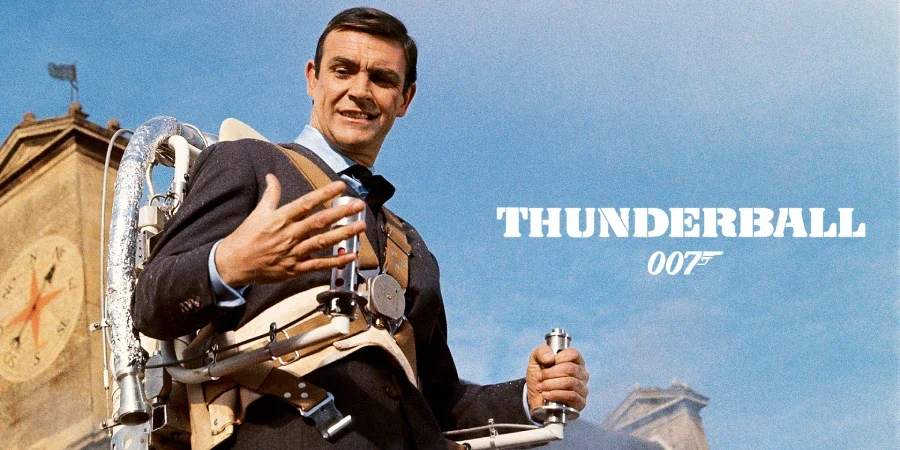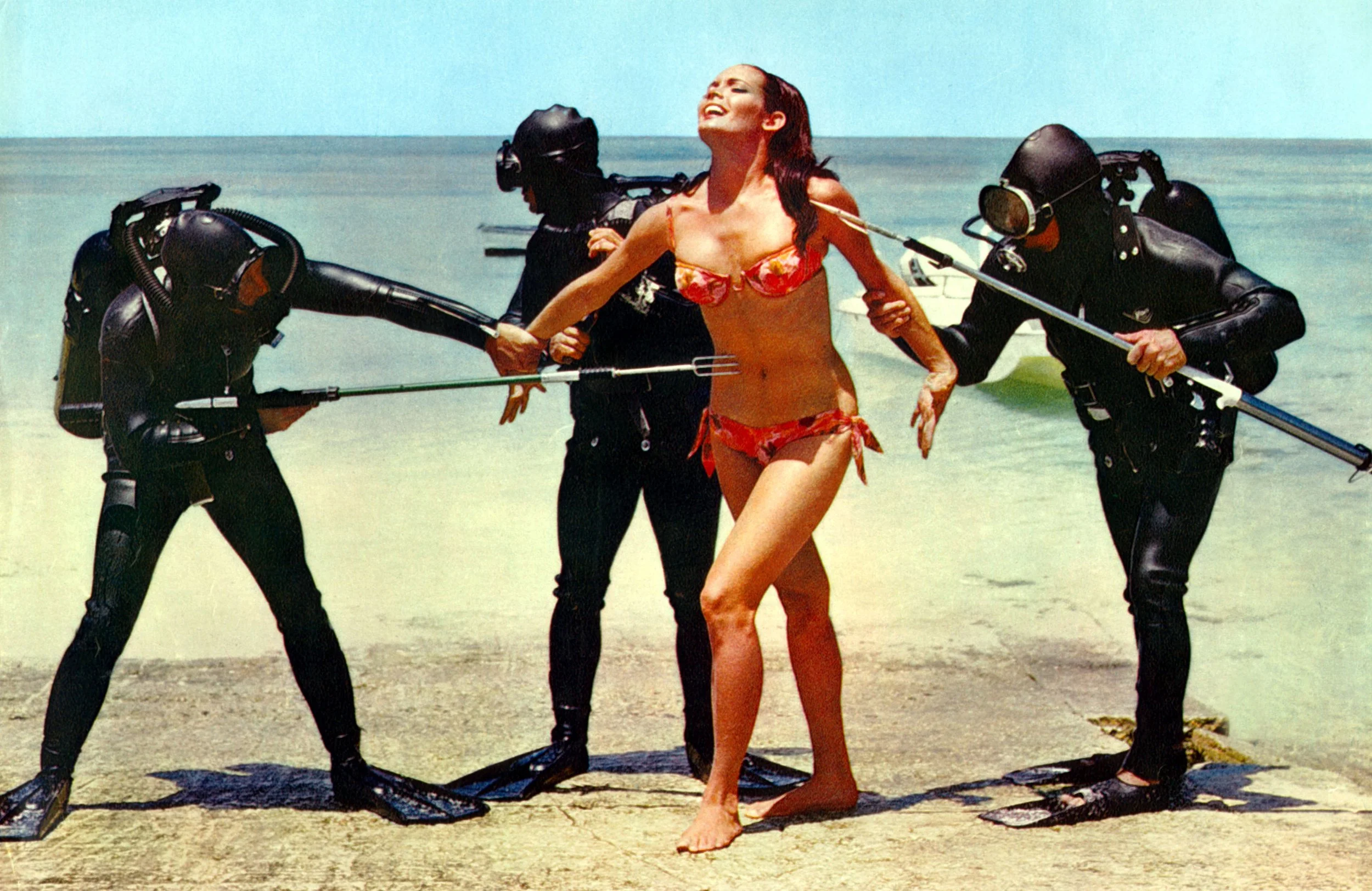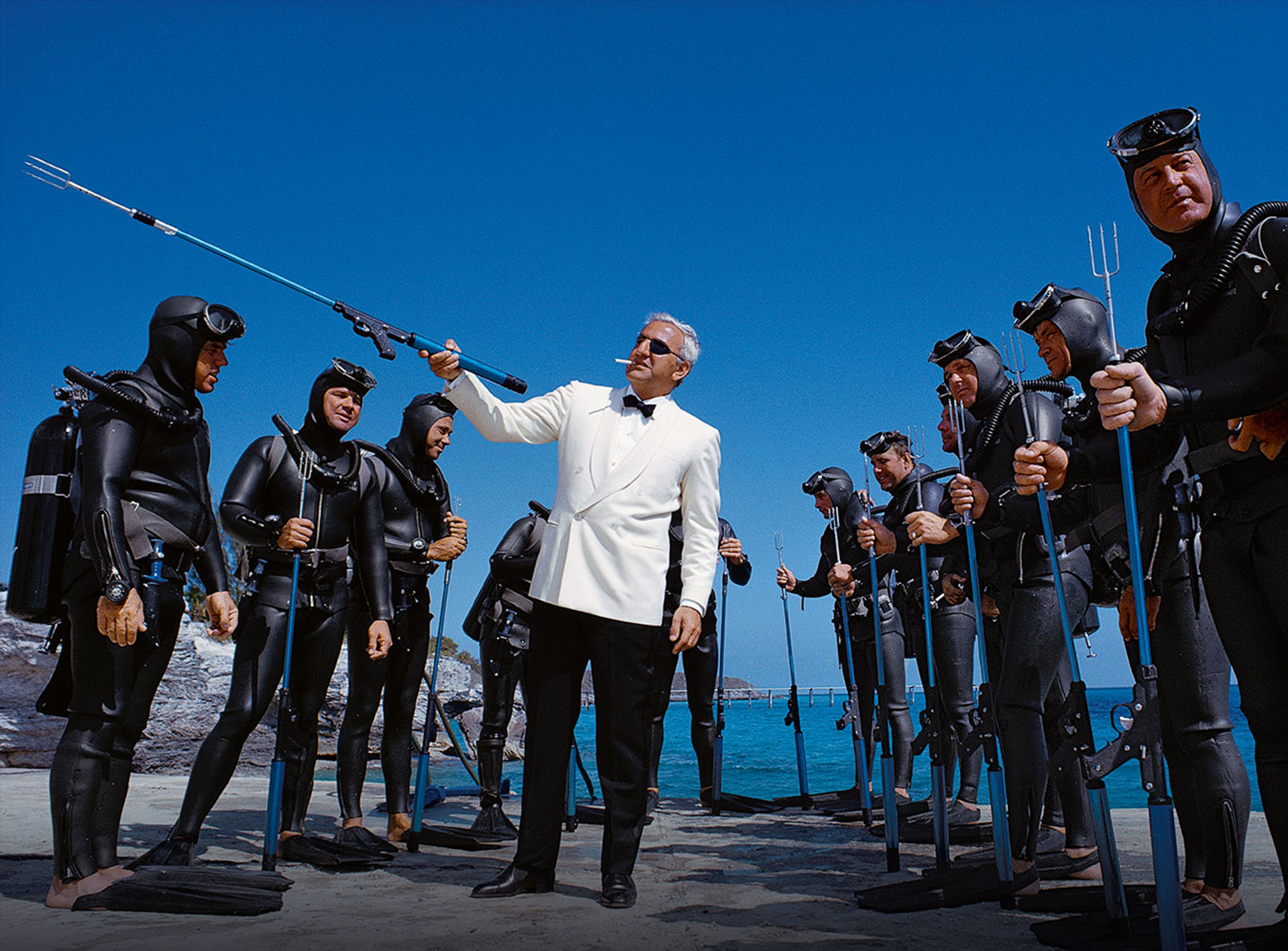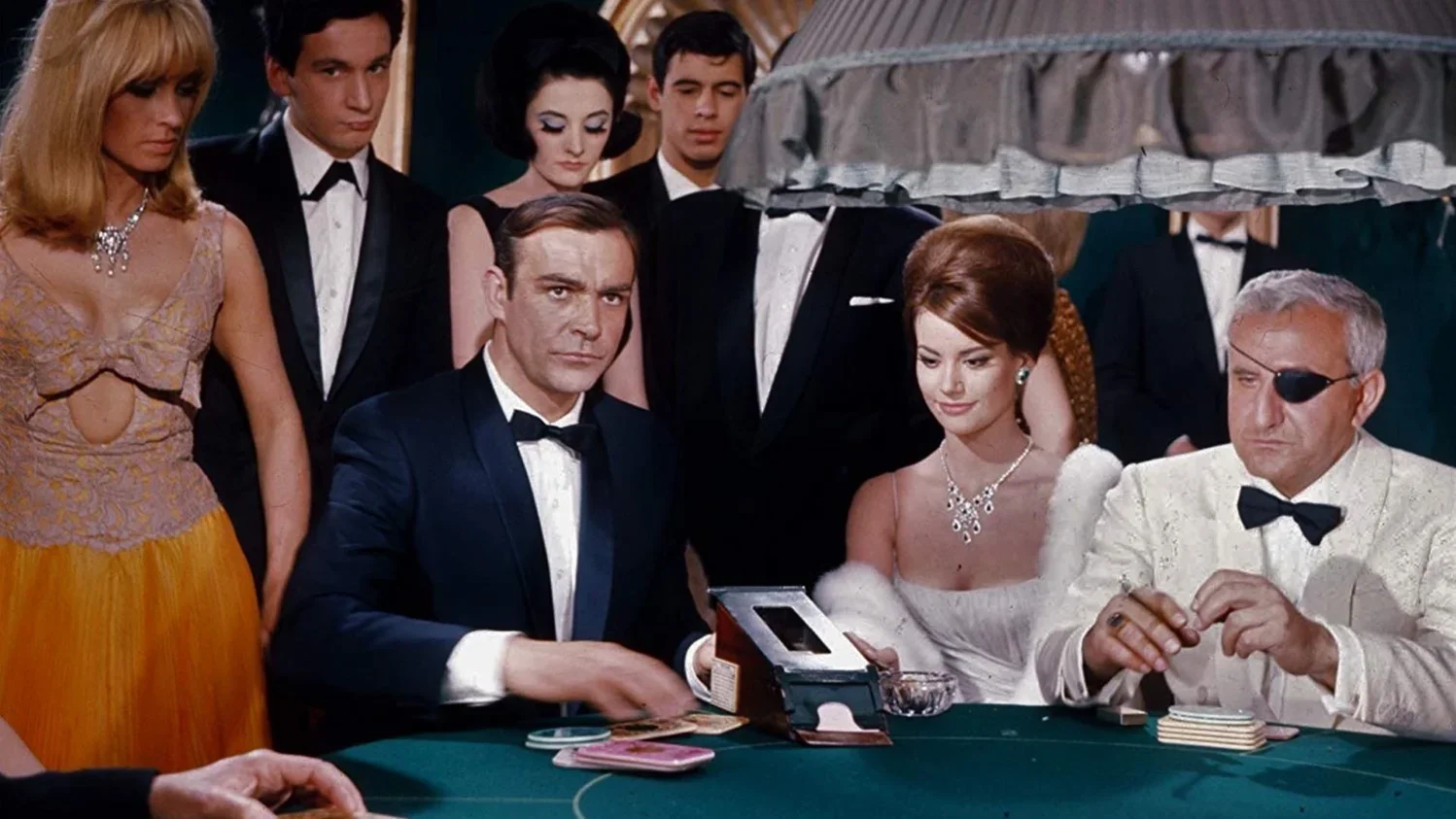Beginner’s Bond: Thunderball
These “Beginner’s Bond” posts are a chronicle of my maiden voyage through the James Bond films. The adventures of 007 have always been one of the most glaring omissions in my knowledge of cinematic history, but I’m slowly closing it, one film at a time. While I found the first two movies to be surprisingly grounded, Goldfinger marked the first hard turn toward the absurd, a trend I hope continues. The next stop on my tour is 1965’s Thunderball.
Right from the start, this movie comes out swinging. Both literally and figuratively. Bond has crashed a funeral, punched a woman (who was a man in disguise) in the face, and made a daring escape via jetpack all before the five-minute mark. The beginning of this movie shows a lot of promise that the rest of it isn’t always able to deliver on. Despite this initial zaniness, the movie pumps the brakes after the title sequence has rolled.
James Bond is taking some mandatory vacation time at the company spa when he randomly decides to follow a weird looking stranger and fumbles into the terrorist plot his colleagues were handling in his absence. An RAF bomber carrying two atomic bombs has been hijacked, and now the nefarious organization known only as SPECTRE demands $280 million in diamonds as a ransom, or they will nuke a major city. Since Bond is the star of this picture, he gets roped into the operation and assigned to follow Domino Derval, sister to one of the deceased hijackers. Making contact with her leads Bond to her lover, Emiliano Largo, aka Number Two at SPECTRE. When he’s not embarrassing him at one of the casino tables, Bond spends his time surveilling Largo’s property and the surrounding waters. This eventually turns up the stolen bomber hidden at the bottom of the ocean, which is enough evidence for the US Coast Guard and Navy to attack the Disco Volante, Largo’s private vessel. One amazing underwater battle later, the good guys have recovered the first bomb, prompting Largo to bail with the second one. Domino skewers Number Two with a spear gun as revenge for her brother. She and James jump just seconds before the runaway boat crashes upon the rocks.
The creators of Thunderball were no doubt emboldened by the success of Goldfinger to go as big and crazy as they could. It turns out that many tropes I have seen used and parodied often originated here, like the brutalist conference room full of villains having a business meeting about their evil empire, seen in almost every secret agent movie since. As well as the evil overlord who executes his underlings for failing to meet expectations, an idea recycled so often its become a cliche. There’s also the elaborate underwater combat engagements with armies of frogmen shooting harpoons at each other, which was parroted by most Saturday morning cartoons for at least one episode. And as far as I can tell, Thunderball started the long running gag of villainous right-hand men being called simply “Number Two.”
But despite its penchant for silly secret agent hijinks, Thunderball is a more flawed film than its predecessor. The title doesn’t make as much sense as its predecessors—“Thunderball” just the codename for the recovery operation. The music isn’t nearly as good, either. And while this movie added plenty of fun stuff to the secret agent canon, it’s also missing some elements that had become staples of the James Bond franchise. There are no real gadgets other than an underwater camera. The superhuman henchman is absent as well. It’s also pretty crazy that they introduce a jetpack at the beginning and it never comes up again, even though our hero spends a significant portion of the film conducting aerial surveillance. At one point Bond even drinks a rum collins instead of a martini!
Almost every scene, even the good ones, goes on too long. Leisurely pans across luscious landscapes pad the runtime a bit, but its mostly action scenes that overstay their welcome, stretching a clever idea until it becomes repetitive and dull. The underwater battle was cool for maybe two minutes, but it goes on for more than five. After a while, its just men anonymized by scuba gear wrestling in a cloud of bubbles. We can’t see or infer enough about this fight to know how its going moment to moment, who’s winning or losing, which makes it hard to care for very long about the quiet deaths of faceless characters we know nothing about. It’s quite rare for an action scene to be the boring part of a movie, but Thunderball managed this dubious feat. The one truly interesting conflict of the movie is between Bond and a SPECTRE agent named Fiona Volpe. For the first time, 007 is the one to get seduced and played for a fool. As she springs her trap on him, she actually mocks Bond for thinking that one sweaty night with him would bring her back to the side of righteousness. For the first time we see James bristle at rejection, lashing out by loudly asserting that it meant nothing to him. And it’s very clear that no one believes that, not even him. He later uses her as a human shield in a gunfight, which is a problematic level of pettiness.
Finally, there’s the villain. Number Two’s entire personality boils down to “guy with an eyepatch.” He’s a big evil jerk just like Goldfinger before him, but not nearly as compelling to watch. He’s not entertainingly rude or viciously sarcastic—he just has poor manners. Largo comes across like this is his first day at villainy and he really wants to make a good impression at the office. Even the shark pool feels like he’s trying too hard to have a signature thing, rather than a peculiar quirk of a singularly malicious mind. He’s not physically intimidating either, and without a henchman backing him up, it never really feels like he poses any particular threat to James Bond. There were moments in Goldfinger where 007 seemed worried he might die, but Mr. Bond never looks that concerned in Thunderball, even when he’s in the villain’s clutches. And if he’s not worried, why should the audience be? If Bond is too nonchalant in the face of danger, it will puncture any tension the story attempts to build. Which is why Thunderball is ultimately an interesting, but not impressive, film.
Thunderball is a fun procession of ludicrous images, but it’s not nearly as well-constructed as its predecessors. The film is far too long, with a poorly paced second act and a fairly lackluster finale. It’s a good movie to have on in the background while you do something more important, but it doesn’t really reward an attentive viewing. While this movie birthed a lot of hilarious tropes that will likely be alluded to time and again for all eternity, Thunderball itself is a rather forgettable film. Definitely the least interesting one so far.
Next stop on this tour is 1967’s You Only Live Twice. Hopefully it will outshine its predecessor, being both more ridiculous and more exciting at the same time. We’re only on the fifth movie. Surely it can’t all be downhill from here.








